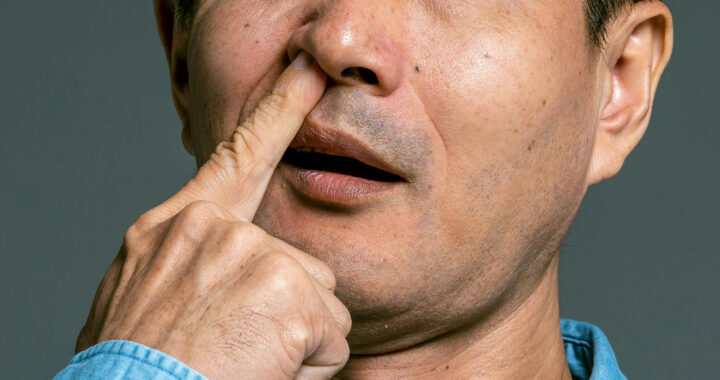There are confirmed health risks associated with nose-picking. These include respiratory infections due to pathogen transmission from contaminated hands and damage to nasal tissues and nasal hairs that increase the risk of infection. Moreover, based on preliminary and ongoing research undertakings, there is a potential link between nose-picking and Alzheimer’s disease. This supports the emerging microbial theory and neuroinflammation hypothesis of Alzheimer’s disease.
The Microbial Theory and Neuroinflammation Hypothesis: How Nose-Picking Can Potentially Increase the Risk of Developing Alzheimer’s Risk
The link between nose-picking and Alzheimer’s disease is a topic of emerging scientific interest and ongoing research pursuit. However, while there is no direct and conclusive evidence in humans linking the two, studies have explored and explained its merits. These have become one of the basis of the microbial theory and neuroinflammation hypothesis of Alzheimer’s disease.
Notable Research and Findings
A 2023 study in mice by Xian Zhou et al. found that the bacteria Chlamydia pneumoniae, which is one of the main pathogens in bacterial pneumonia, could travel from the nose to the brain within 24 to 72 hours Furthermore, when the nasal lining was damaged, the infection of nerves worsened, leading to increased deposits of amyloid-beta protein in the brain.
Researchers Lynn Nazareth et al. also concluded in their 2021 paper that Chlamydia muridarum, which infects mice and is used to model human chlamydial infections, can invade and infect the central nervous system via the olfactory system and trigeminal nerves or the cranial nerve five or CN5. This bacteria can specifically infect peripheral nerve glial cells.
Moreover, according to earlier research by Mahboobeh Mahdavinia et al., which was published in 2016, chronic inflammation in the nasal cavity, such as from chronic rhinosinusitis, might disrupt the normal nasal microbiome. This could potentially affect the central nervous system and increase the risk of neurodegenerative conditions like Alzheimer’s disease.
Potential Pathways
The nose and the entire olfactory system have their own community of bacteria known as the nasal microbiome. The olfactory system has a direct connection to the brain. Nose-picking, especially if it damages the nasal lining, could potentially introduce harmful bacteria and other pathogens into the nasal cavity. These pathogens can travel further and invade the brain.
Some research, primarily in mouse models, has shown that certain bacteria can travel along the olfactory nerve or the cranial nerve from the nose into the central nervous system. These pathogens can evade the blood-brain barrier and enter the brain. Hence, once in the brain, they can trigger an immune response, leading to site-specific inflammation or neuroinflammation.
To be specific, in response to infection, the brain may produce amyloid-beta proteins, which have antimicrobial properties. Excessive accumulation of these proteins forms plaques. These plaques are a hallmark of Alzheimer’s disease. It is worth mentioning that chronic inflammation and plaque accumulation can lead to neuronal damage and eventual cognitive decline.
Important Pointers and Caveats
The most direct evidence linking nose picking and Alzheimer’s disease comes from animal studies or specific mouse models. There are no studies establishing the link in human studies. It is important to conduct more research on humans to confirm if the same mechanism or pathways are at work. Establishing a causal relationship between the two is critical.
Specifically, while some studies have found associations between certain bacteria in the brain and Alzheimer’s markers, this does not necessarily prove that the bacteria cause the disease or that nose-picking is the primary route of entry in humans. Findings from the Zhou et al. and Nazareth et al. studies suggest correlation rather than direct or actual causation.
Alzheimer’s disease is also a complex condition with likely multiple contributing factors. These factors include genetics, age, and environmental influences. There are different risk factors that contribute to the development of this disease. It is highly improbable that nose-picking alone would be a direct cause. Maintaining good nasal hygiene is still important
FURTHER READINGS AND REFERENCES
- Mahdavinia, M., Keshavarzian, A., Tobin, M. C., Landay, A. L., and Schleimer, R. P. 2015. “A Comprehensive Review of the Nasal Microbiome in Chronic Rhinosinusitis.” In Clinical & Experimental Allergy. 46(1):21-41. Wiley. DOI: 1111/cea.12666
- Zhou, X., Kumar, P., Bhuyan, D. J., Jensen, S. O., Roberts, T. L., and Münch, G. W. 2023. “Neuroinflammation in Alzheimer’s Disease: A Potential Role of Nose-Picking in Pathogen Entry via the Olfactory System?” In Biomolecules. 13(11): 1568. MDPI AG. DOI: 3390/biom13111568
